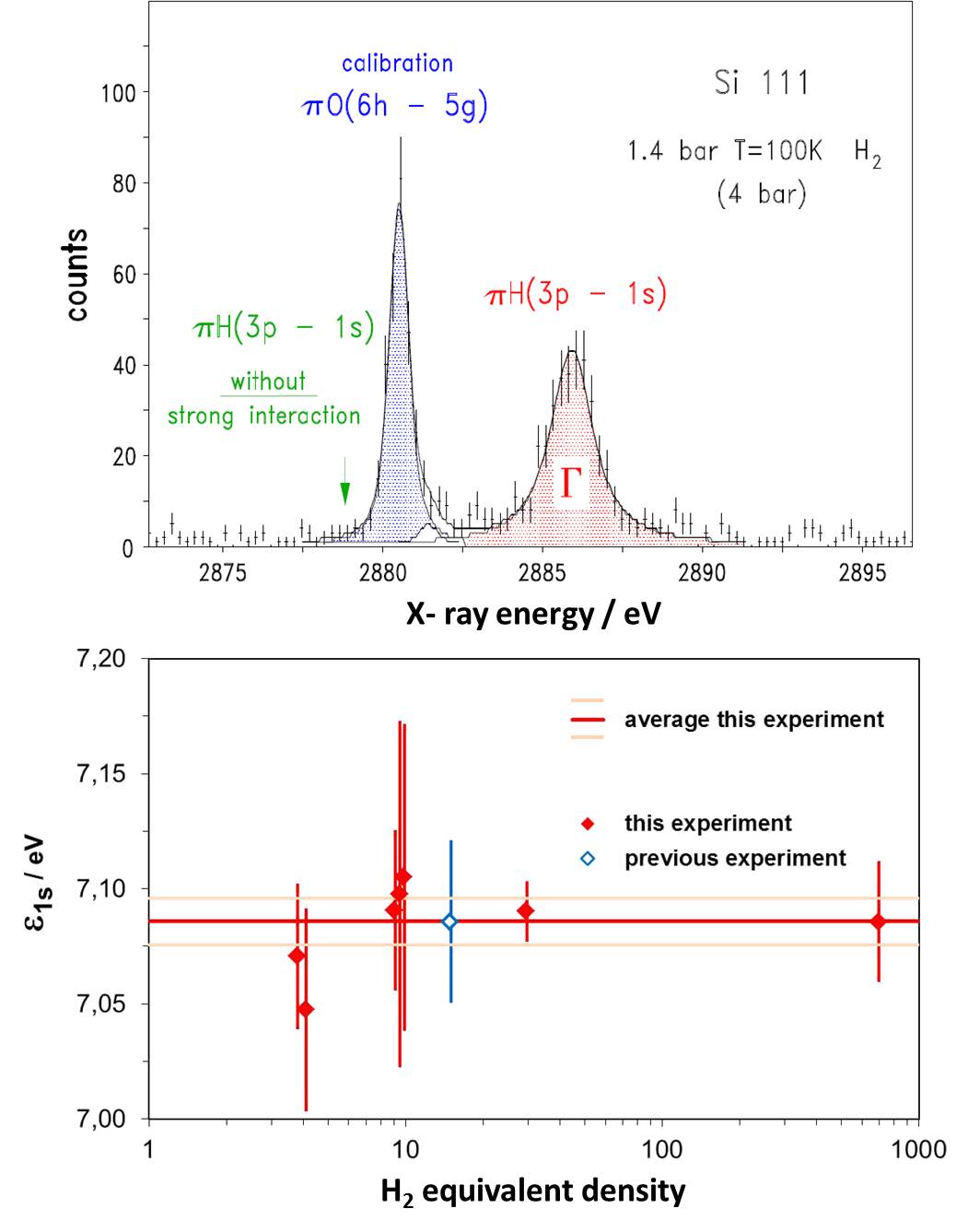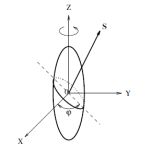News
EPJ TI Review - Applications of Raman micro-spectroscopy to stem cell technology
- Details
- Published on 14 April 2015

This short review, part of the Thematic Series on Raman Spectroscopies, describes the application of Raman micro-spectroscopy to measure the molecular properties of stem cells during differentiation in-vitro. The paper focuses on time- and spatially-resolved Raman spectral measurements that allow repeated investigation of live stem cells in-vitro.
EPJ Plus Highlight - Accurate dating requires calibration down to the last ion
- Details
- Published on 14 April 2015

A new solution accurately counting the exact amounts of ions from laboratory radiation exposure helps to simulate the natural radiation of quartz samples used for thermoluminescence dating
Thermoluminescence is used extensively in archaeology and the earth sciences to date artefacts and rocks. When exposed to radiation quartz, a material found in nature, emits light proportional to the energy it absorbs. Replicating the very low dose of background radiation from natural sources present in quartz is a key precondition for precise and accurate dating results. Italian scientists have now developed a method to control the accuracy of the dose calibrations delivered to the samples during laboratory irradiation with heavy particles, replicating natural radiation exposure. These findings have just been published by Lara Palla from the National Institute of Nuclear Physics (INFN), Italy, and colleagues in a paper in EPJ Plus. Using oxygen and lithium ions from the Tandem accelerator at INFN LABEC in Florence, they found that their measurements were accurate to within 1%, despite large fluctuations in the irradiation beam.
EPJ E Highlight - Rodeo in liquid crystal
- Details
- Published on 30 March 2015

Scientists have achieved an unprecedented level of control over defects in liquid crystals that can be engineered for applications in liquid matter photonics
Sitting with a joystick in the comfort of their chairs, scientists can play “rodeo” on a screen magnifying what is happening under their microscope. They rely on optical tweezers to manipulate an intangible ring created out of liquid crystal defects capable of attaching a microsphere to a long thin fibre. Maryam Nikkhou and colleagues from the Jožef Stefan Institute, in Ljubljana, Slovenia, recently published in EPJ E the results of work performed under the supervision of Igor Muševič. They believe that their findings could ultimately open the door to controlling the flow of light using light of a specific frequency in the Gigahertz range in liquid crystal photonic microdevices.
EPJ A Highlight - Pionic-Hydrogen Atom and Quantum Chromodynamics
- Details
- Published on 30 March 2015

Analogous to the vast amount of knowledge acquired on the electronic hydrogen atom over the last century and the success of Quantum Electrodynamics (QED), hadronic physics is using a similar system, namely “pionic hydrogen” - a hydrogen atom where the electron is replaced by a negatively charged pion - as a laboratory for investigating Quantum Chromodynamics (QCD). Like in electronic hydrogen the finite size of the proton plays a role in the precise determination of the ground state of the atom. The smaller Bohr radius of the pion offers a larger sensitivity to the strong interaction between the pion and the proton, leading, e.g., to an energy shift compared to the ground state energy if only the electromagnetic interaction is considered. The precise determination of this shift provides a benchmark of our understanding of the pion-proton strong interaction from basic principles in QCD. To this end an exquisite experiment was devised and performed at the high intensity, low energy pion beam at the Paul Scherrer Institut using a cyclotron trap and an ultimate resolution Bragg spectrometer leading to an impressive four fold improvement compared to the previous best measurement as shown in Fig. 1.
New associate editors in EPJ AP
- Details
- Published on 27 March 2015
EPJ Applied Physics has appointed some new associate editors over the last two months and we are very pleased to introduce our new team and their expertise.
EPJAP now stands poised to continue its original goal to become an influential international journal. The recently appointed editors will contribute to its progress with new ideas and perspectives. They are all professional, outstanding scientist who have a vast experience and are strongly motivated towards excellence. We expect that the new editorial board will increase the benefits of the EPJAP's readers and authors even further in the future.
EPJ E Highlight - Building sound foundations: a matter of granular dynamics
- Details
- Published on 25 March 2015

Applying the hydrodynamics approach to granular matter helps explain its wide range of behaviour, regardless of whether the material is solid- or fluid-like
Sand, rocks, grains, salt or sugar are what physicists call granular media. A better understanding of granular media is important - particularly when mixed with water and air, as it forms the foundations of houses and off-shore windmills. Until recently, there was no single theory that could account for granular media’s flows at different speeds. Now, a new theory dubbed GSH, which stands for granular solid hydrodynamics, is supplementing previous models of granular material that work only for narrow speed ranges. And Yimin Jiang from Central South University, Changsha, China and Mario Liu from the University of Tübingen, Germany have now applied GSH to different experimental circumstances, for a wide range of flow speeds, in a study published in EPJ E.
EPJ B Highlight - Quantum computing: one step closer with defect-free logic gate
- Details
- Published on 18 March 2015

Developing a new approach to quantum computing, based on braided quasi-particles as a logic gate to speed up computing, first requires understanding the potential error-inducing factors
What does hair styling have in common with quantum computing? The braiding pattern has inspired scientists as a potential new approach to quantum calculation. The idea is to rely on a network of intersecting chains, or nanowires, containing one-dimensional quasi-particles. The way these quasi-particles evolve in space time produces a braid-like pattern. These braids could then be used as the logic gate that provides the logical function required for calculations in computers. Due to their intrinsic properties, such braids are much more difficult to destabilise and less error-prone. Yet, local defects can still arise along nanowires. In a study published in EPJ B, Jelena Klinovaja affiliated with both the University of Basel, Switzerland and Harvard University, Cambridge, MA, USA, and Daniel Loss from the University of Basel, Switzerland identify the potential sources of computer errors arising from these defects.
EPJ D Highlight - The new frontier in plasma medicine
- Details
- Published on 17 March 2015

Data on the transport of electrical charges in water vapour provide the key ingredients to new plasma models applicable to medicine
Applications of plasmas in medicine are a new frontier in therapeutic treatment. For example, they can help in stimulating tissue regeneration in the contexts of wound healing and dermatology. Before these and further applications can be developed, it is essential to understand the processes at work in plasmas - a unique kind of gas-like state of matter containing charged particles. Now a study published in EPJ D by a team led by Zoran Petrović from the University of Belgrade, Serbia, provides previously unavailable data on oxygen ion transport and the likelihood of such ions interacting with water molecules. These could contribute to new models of plasmas in liquids which account for how discharges are created in water vapour.
EPJ B Highlight - New remote control for molecular motors
- Details
- Published on 13 March 2015

It is now theoretically possible to remotely control the direction in which magnetic molecules spin, which opens the door to designing applications based on molecular motors
In the eyes of physicists, magnetic molecules can be considered as nanoscale magnets. Remotely controlling the direction in which they rotate, like spinning tops, may intuitively be difficult to achieve. However, Russian physicists have just demonstrated that it is theoretically possible to do so. They have shown that a change of direction in the circular polarisation of an external magnetic field leads to a change in the direction of the mechanical rotation of the molecule. These findings by Iosif Davidovich Tokman and Vera Il‘inichna Pozdnyakova from the Institute for Physics of Microstructures, Russian Academy of Sciences, Nizhny Novgorod, Russia, were recently published in EPJ B. Possible applications of the phenomenon include rotating magnetic molecules used as molecular rotors to power molecular motors.
EPJE: New section about tips and tricks in soft matter and biological physics
- Details
- Published on 13 March 2015

EPJE Associate Editors Kari Dalnoki-Veress and James A. Forrest open the journal for submissions of a new type of paper: Tips and Tricks.
Underpinning the scientific enterprise there is often some crucial numerical recipe, a sample cell configuration, a sample preparation method, or experimental design. In some cases more emails were shared describing a trick than citations gathered by the paper where a brief description was provided. Typically such details are only briefly described in the journal literature, passed only from student to student, or simply shared as a ‘personal communication’. Sometimes such enabling techniques are not passed on at all. In all such cases, the scientific community as a whole is missing out, lacking a way to document this knowledge and to build on it. Moreover, while the specific research of some team may not be directly relevant to another, a transformative computational or experimental methodology can form the commonality between researchers working in different fields.
2015 will see the launch of a new section of EPJ E: Tips and Tricks.




